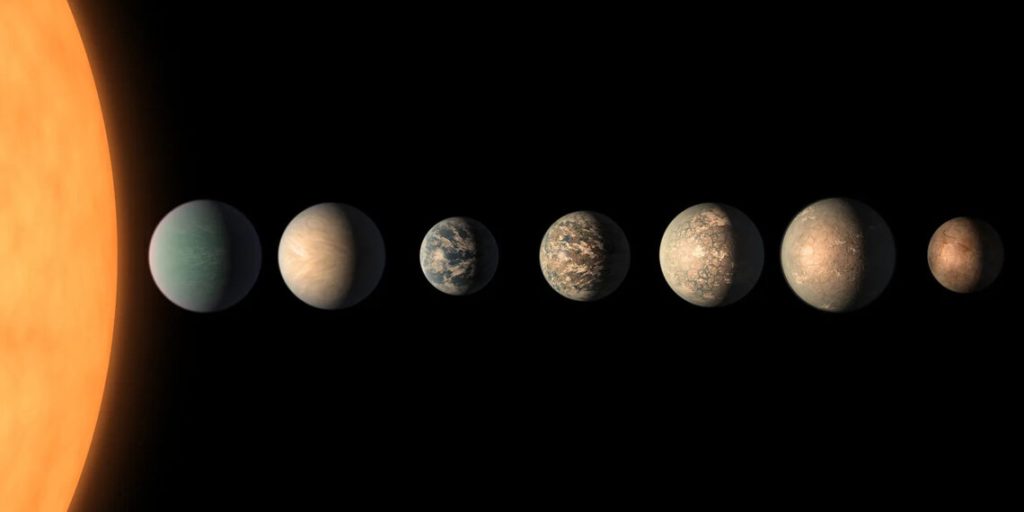Since its launch in late 2021, NASA’s James Webb Space Telescope has raised the possibility that we could detect signs of life on exoplanets, or planets outside our solar system.

Top candidates in this search are rocky, rather than gaseous, planets orbiting low-mass stars called M-dwarfs — easily the most common stars in the universe. One nearby M-dwarf is TRAPPIST-1, a star about 40 light years away that hosts a system of orbiting planets under intense scrutiny in the search for life on planets orbiting stars other than the sun.
Previous research questioned the habitability of planets orbiting TRAPPIST-1, finding that intense UV rays would burn away their surface water. That would leave the planet’s surface desiccated and — if only the hydrogen part of the water vapor molecules escapes — potentially with huge amounts of reactive oxygen that would inhibit origin-of-life chemistry.
Now, a University of Washington-led study recently published in Nature Communications finds that a sequence of events during the evolution of certain rocky planets orbiting M-dwarfs creates an atmosphere that would be stable over time.